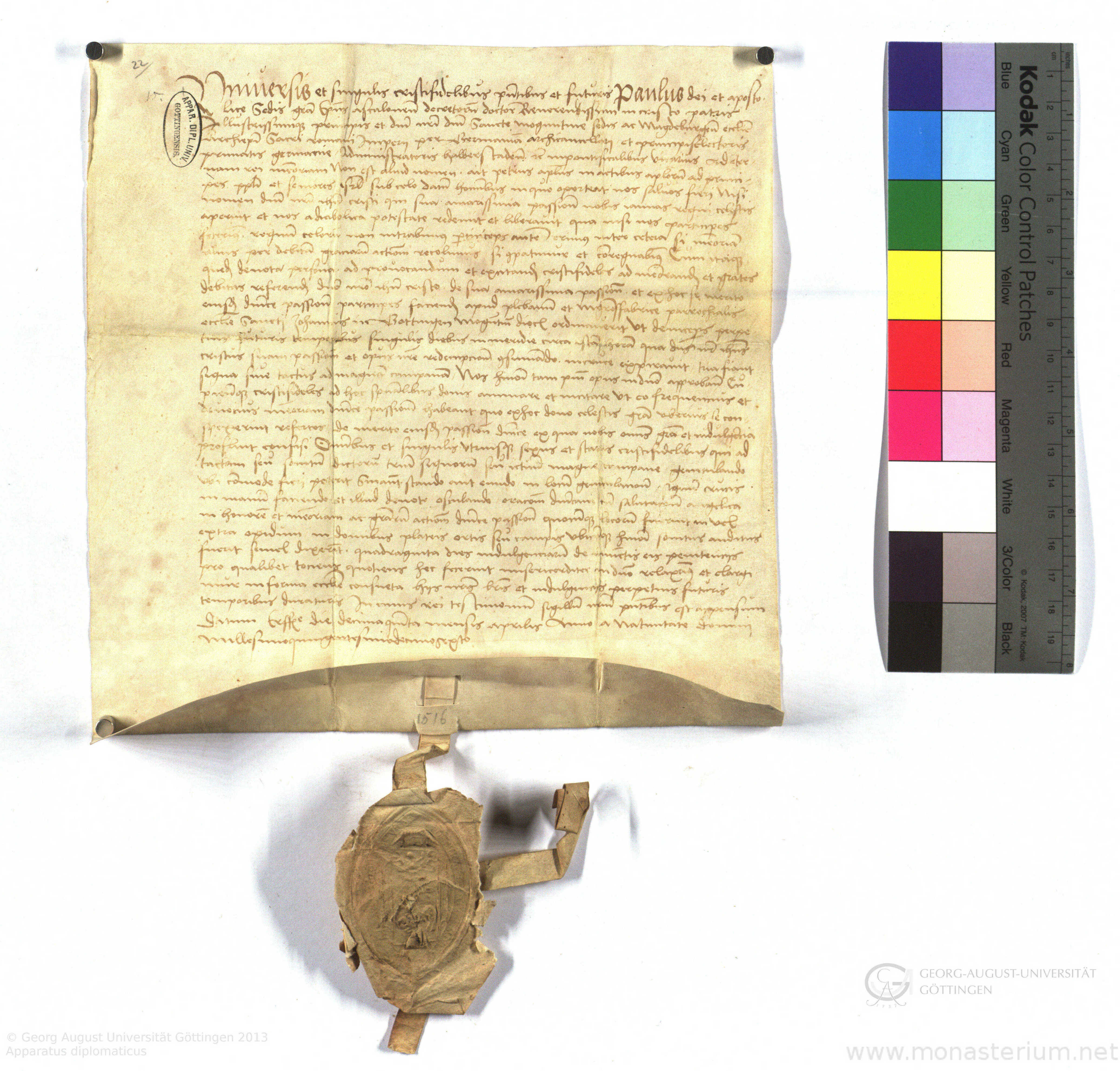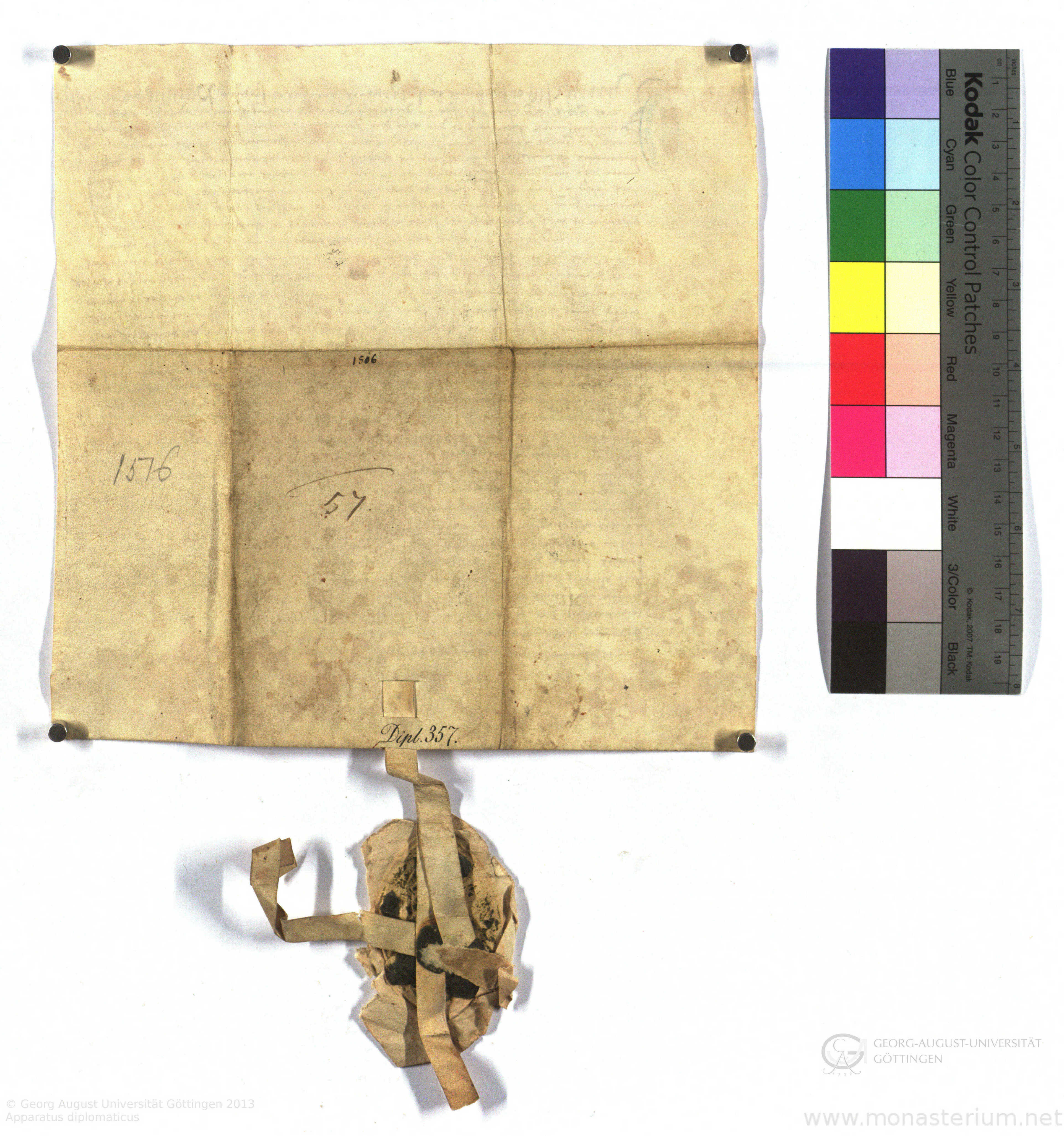Charter: Apparatus diplomaticus - Urkundenhauptbestand App. dipl. 357
Signature: App. dipl. 357
Add bookmark
Edit charter (old editor)
1516 April 15, Erfurt
Paulus Bischof von Ascalon, doctor decretorum, vicarius des Erzbischofs von Mainz (Moguntina) und Magdeburg, des römischen Reiches in Deutschland (Germania) Erzkanzler und Kurfürsten, des Primas von Deutschland (Germania) Administrator in Halberstadt (Halberstaden.) in pontificalibus
bekundet, dass er der Pfarrkirche St. Johannis in Göttingen (Gottingen) einen Ablaß von 40 Tagen (quadraginta dies indulgentia de iniunctis eis penitenciis) verliehen habe. Aussteller: Paulus Bischof von Ascalon, doctor decretorum, vicarius des Erzbischofs von Mainz (Moguntina) und Magdeburg, des römischen Reiches in Deutschland (Germania) Erzkanzler und Kurfürsten, des Primas von Deutschland (Germania) Administrator in Halberstadt (Halberstaden.) in pontificalibus Empfänger: Johanniskirche zu Göttingen Current repository:
Göttingen Diplomatischer Apparat, App. dipl., 357
Göttingen Diplomatischer Apparat, App. dipl., 357
Wachs an Pergamentstreifen
Material: Pergament
Dimensions: 21h x 22,2b cm


Original dating clause: Datum Erffe ^^e die decima quinta mensis Aprilis anno a nativitate domini millesimo quingentesimo decimo sexto.
Editions:
- Bruns, Göttinger Urkundenbuch.
Comment
Places
- Erfurt
Göttingen, Diplomatischer Apparat der Georg-August-Universität, Apparatus diplomaticus - Urkundenhauptbestand App. dipl. 357, in: Monasterium.net, URL </mom/DE-GAUnivGoet/AppDipl/App_dipl_357/charter>, accessed at 2024-11-22+01:00
You are copying a text frominto your own collection. Please be aware that reusing it might infringe intellectural property rights, so please check individual licences and cite the source of your information when you publish your data
The Charter already exists in the choosen Collection
Please wait copying Charter, dialog will close at success